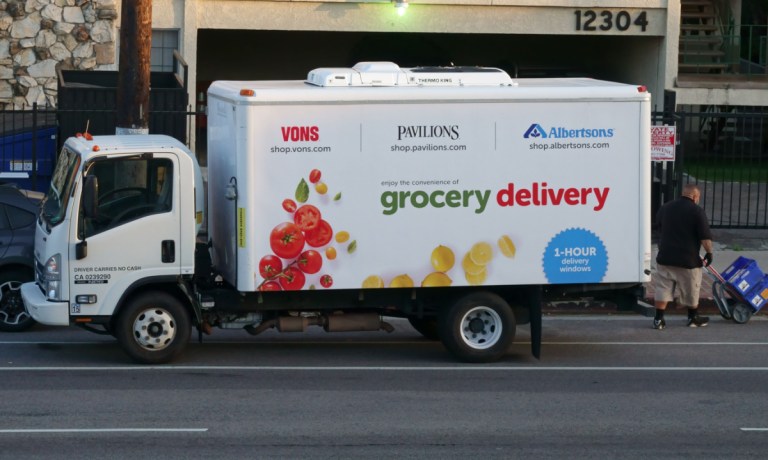
Consumers’ increasing adoption of grocers’ in-house eCommerce options is eating into the retailers’ margins amid ongoing financial challenges.
Grocery giant Albertsons Companies, Inc., which has more than 2,200 locations across 34 states, reported financial results for the quarter ended Dec. 2 on Tuesday (Jan. 9), noting that it has seen strong growth in its digital business — a 21% year-over-year increase in eCommerce sales — but that this shift comes with near-term challenges.
“While we are benefiting from our productivity initiatives,” Albertsons CEO Vivek Sankaran said in a statement, “we expect to continue to see the impacts of investments in associate wages and benefits, cycling significant prior year food inflation, customers receiving less government assistance, the resumption of student loan payments and other types of payment deferrals, inflationary cost increases and the outsized growth of our pharmacy and digital businesses as we continue to lean into increased customer engagement in our Customers for Life strategy.”
Indeed, digital sales are costlier to fulfill than brick-and-mortar, demanding the labor to pick the products either from the store or from a dedicated fulfillment center and then, in the case of delivery purchases, to bring them to consumers’ doors.
In fact, some grocers have been decelerating or even reversing course on their direct fulfillment businesses in light of these challenges. Take, for instance, Kroger’s decision last year to slow the rollout of its eCommerce fulfillment centers or Ahold Delhaize USA’s move to shut down some of its own supermarkets’ fulfillment centers and to sell off its FreshDirect grocery delivery business.
It is not only the labor cost — the technology can also be difficult and costly to build out for grocers.
“When it comes to online grocery ordering, there are a few friction points that still exist,” Rob Hill, general manager of order ahead at Instacart, told PYMNTS in an interview in July. “One major challenge is that many grocery retailers still struggle to make the online shift on their own. … The thing is, if you don’t have a solid ordering system in place, it becomes tough to digitize the whole in-store fulfillment process. This has been a headache for grocers for a while.”
Overall, the online grocery opportunity is significant. According to the PYMNTS Intelligence survey “Consumer Interest in an Everyday App,” created in collaboration with PayPal and based on responses from more than 2,200 U.S. consumers, 61% of those who had shopped for groceries in the previous month did so via connected devices at least some of the time.
Grocers are noting this demand. The study “Big Retail’s Innovation Mandate: Convenience and Personalization,” a PYMNTS Intelligence and ACI Worldwide collaboration, which drew from a survey of 300 major retailers in the U.S. and U.K., found that 76% of grocers think consumers would be very or extremely likely to switch merchants if they were not able to order products for delivery.
Yet only a small share of grocery purchases are actually made via digital channels. The PYMNTS Intelligence study “Tracking the Digital Payments Takeover: Catching the Coming eCommerce Wave,” which drew from a survey of nearly 2,700 U.S. consumers, revealed that 87% of grocery transactions are carried out in stores and 12% occur online.